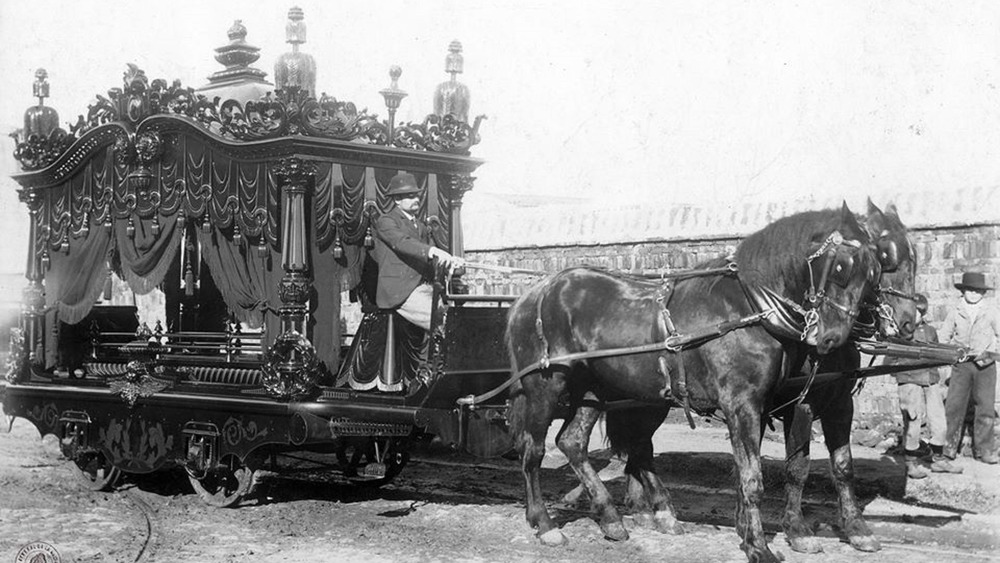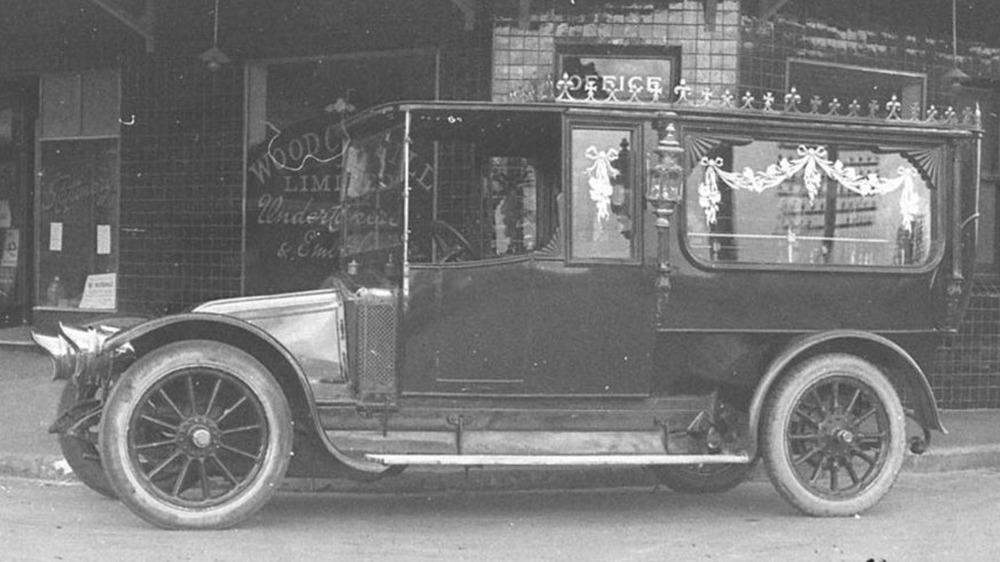Vintage Hearses Were Very Different From What You Imagine
For many folks, the word "hearse" might evoke a pretty drab, morose image: a long, black, old-Cadillac-like, station-wagon-looking thing with a caboose big enough to slide in the most ornate and oversized coffin. It leads a somber, slow procession of cars that creep toward a rainswept gravesite, waiting mourners shielded by black umbrellas.
But if you lived (and died) prior to the 1920s, when those fancy-pants "motorized horse-drawn carriages" came into vogue, you might have been fortunate enough to have had your corpse conveyed in a highly decorated, artistic tribute to life that rivaled the most ornamented, hand-drawn steampunk sketch you might find in your high school Social Studies notebook. Also, they look like they'd have been favored by vampires.
Don't believe us? Check out Wander Wisdom, featuring hearses gripped by mournful angels cast from pewter, wood carved to look like flowing drapes caught in the wind and framing a view of the casket within, angels and cross-bearing caps crowning car tops — certainly suitable to a far more elegant, ceremonious (and sure, ostentatious and pricey) approach to dealing with death. And yes, some of the hearses on display, which belong to the National Museum of Funeral History in Houston, feature engines, too. Starting with the 1930s, though, you might get the whole Studebaker slash Lincoln Town Car aesthetic, but lose all the fab flair and wheels swappable for skis come wintertime.
Hearses evolved to be cheaper, simpler, and streamlined
The first non-horse hearse, in fact, was built in 1909, when H. Durward Ludlow commissioned it for $6,000 (about $180,000 today), around four times the then-current price. Before that, there was more time to see, and admire, the slower splendor of a horse-drawn design enshrouding the dead being carried through the streets. It makes sense why, in the early 20th century, when goods were becoming mass-produced, that hearses adopted a more utilitarian aesthetic. This is why so many antiques, in general, look profoundly amazing, full of stunning detail, but folks today are left with dining room tables from Ikea.
Of course, vintage hearses took a long time to make, and were often among the least desirable work that a coachmaker could want. For all the beauty of those on display at the National Museum of Funeral History, including those used in the actual funerals of Grace Kelly and presidents Ronald Reagan and Gerald Ford, others were considered "over-ornamented," per History Net. They were also expensive. Hearses were crafted by coachmakers such as James Cunningham, Son & Co. with their multiple "emblems, bouquet-holders, gold-fringed white curtains" offerings, which were bought by funeral companies who passed the cost along to customers. Some smaller towns, especially in the Old West, didn't even have hearses, or when there was a widespread accident and lots of dead, they ran out.
But if you're still down for the old horse-drawn method, funeral homes like Mortons in England have got you covered.

